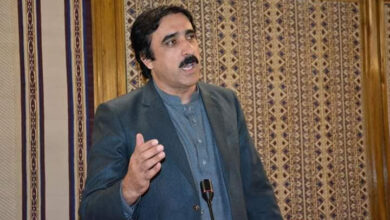Lack of Storage Facilities Leads to Massive Vegetable Crop Losses in Punjab

Lahore: A significant increase in vegetable cultivation—ranging from 15% to 64%—has caused market prices to fall by as much as 52%, resulting in substantial losses for farmers due to a lack of modern storage, processing, and packaging infrastructure.
Although higher agricultural production is generally a positive sign for any agrarian economy, it can become a challenge when post-harvest facilities are inadequate. Without proper storage, surplus crops either sell at throwaway prices or go to waste.
In Punjab, many farmers turned to seasonal vegetables this year after suffering heavy losses from wheat cultivation last season. Crops such as peas, potatoes, cauliflower, onions, tomatoes, garlic, carrots, and radishes were widely grown. However, local demand and exports remained low, pushing vegetable prices to a five-year low and causing severe financial distress among farmers.
Ali Hamza, a farmer from Bhaseen, shared his experience: “Last year, I cultivated wheat on 10 acres and faced losses. This year, I planted peas, turnips, carrots, radishes, and mustard greens on five acres but still suffered. I lost over PKR 300,000 just on cauliflower and carrots. I ended up feeding the cauliflower to my cattle as fodder.”
Wholesaler Mian Afzal noted that the crisis has affected not just farmers but also those who supply them with seeds, fertilizers, and credit. “Farmers usually repay loans after harvesting their crops. But now, they can’t even cover harvesting and transportation costs—how will they repay their debts?”
According to Dr. Anjum Ali Butter, former Director General of Punjab Agriculture Department (Extension), vegetable cultivation began earlier than usual this year due to favorable weather, resulting in a production boom. He added that exports of key crops like potatoes and cabbage to Afghanistan did not materialize, increasing local supply and depressing prices.
Aamir Latif, a senior scientist at Ayub Agricultural Research Institute, Faisalabad, confirmed that oversupply led to the price drop. “Farmers, disappointed with poor wheat returns last year, shifted to alternative crops like vegetables,” he explained.
Punjab Agriculture Department data shows wheat cultivation declined by 1.191 million acres this year. Similarly, gram and fodder crops saw a drop in acreage, while vegetable farming surged. Pea cultivation rose by 64% to 1.18 million acres, while potato and onion cultivation increased by 15%.
Progressive farmer Aamir Hayat Bhandara emphasized the need for modern cold storage and processing facilities, especially since vegetables are highly perishable. “With such infrastructure, farmers wouldn’t need to rush their produce to markets. Dried vegetables are common worldwide due to their longer shelf life, but unfortunately, that trend hasn’t caught on here yet,” he said.





